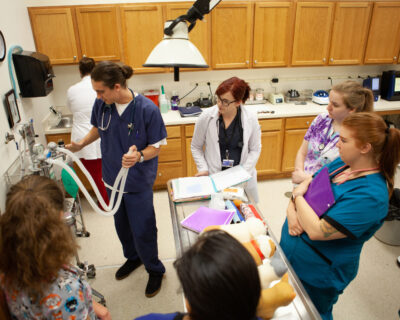By Meg Varner-Soden, DVM
Originally published in the April 29, 2022, edition of the Valley Advantage.
As the days become warmer and rain replaces snow, my mind switches gears away from skis and shovels to gardening and hiking.
There’s nothing I love more than to be outside all day with my family and our dog. However, especially now that I am both a pet and human parent, I dread the unavoidable surge in encounters with parasites — especially fleas and ticks. Today, I will try to answer a few of the more common questions many pet owners have about these external parasites.
Our first question is, “Why are veterinary teams so concerned with year-round prevention of fleas and ticks on my pets?”
Actually, human health care providers are as concerned as your veterinary team because, while flea and tick infestations are an unsightly nuisance, they also present a real risk of vector-borne diseases, which are diseases spread by biting insects, for both our pets and ourselves.
Ticks become active as soon as that thermometer reaches 35 degrees Fahrenheit. Folks, we have had warm spells as early as February for the last few years, so it’s never too early to keep alert for ticks.
There are several common species of ticks in our region, ever-increasing in prevalence due to wildlife movement and a warmer climate. They may carry Lyme disease (Borreliosis), Anaplasma, Rocky Mountain Spotted Fever, Ehrlichia and Babesia. These diseases may be tricky to diagnose quickly and have the potential to become a chronic problem, which is both an emotional and financial burden to carry.
Did you know that sometimes a single tick may carry and transmit more than one of those diseases at a time and one type of tick, called the Brown Dog Tick, prefers to live and hide indoors?
Fleas can cause anemia, flea bite dermatitis (a robust allergic skin reaction to the flea saliva), and are vectors for tapeworms, Cat Scratch disease, Hemoplasmas and even plague. Flea numbers can explosively escalate in a short time. A flea infestation, once noticed, is incredibly frustrating to eradicate because it takes significant time and diligence to clear all of its life stages. In health care providers’ opinions, proactively preventing an infestation is much more prudent than reacting to them after the fact.
“How can I prevent fleas and ticks from infesting my pets and home?” is our second question this month.
Many products are available — for both cats and dogs — that can simultaneously combat fleas and ticks for lengthy periods of time. There are both prescription and over-the-counter options, and they come in a variety of formulations ranging from collars to oral tablets to topical formulations. Consult with your veterinarian about which products are the best choices for your pets, lifestyle and budget.
Also, nothing beats a good flea combing routine, running your hands over your pets daily and routine bathing. My children anticipate that they are going to bathe every evening and we are going to check everyone, including the dog, for ticks.
When it comes to protecting the inside of your home, minimize the clutter that parasites can hide in, mitigate the presence of mice and vacuum and launder regularly — including the pets’ bedding. Promptly change out of your yardwork/hiking/hunting clothes and put them in an isolated area (or even run them through the laundry), and jump through the shower before you start relaxing inside. Be mindful of the humidity and heat in the house — fleas thrive in higher humidity and temperatures. Fleas are also more likely to thrive in homes full of carpet and fabric-upholstered furniture, anything that mimics a furry creature.
Outdoors, you can decrease the density of fleas and ticks by closely manicuring your grass, choosing plants that don’t attract deer, avoiding the lingering presence of leaf litter and brush piles and limiting ground cover and woodpiles close to the home.
Also, be mindful of the number of furry animals you own — the more pets, the more feeding stations available to fleas and ticks.
Ultimately, like with anything, knowledge is power. One excellent educational resource I recommend for all pet owners is CAPCvet.org, the Companion Animal Parasite Council website. And if you find your pets becoming prey to fleas and ticks, consult with your trusted veterinary team.
Dr. Meg Varner-Soden, DVM, is the veterinarian at the Johnson College Animal Care Center and an instructor for Johnson College’s two-year veterinary nursing associate degree program. She has been practicing veterinary medicine for 12 years.






